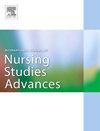护理科学视角下的Rollator可用性:对亚马逊客户评论的平行定性内容分析
IF 3.1
Q1 NURSING
International Journal of Nursing Studies Advances
Pub Date : 2025-09-11
DOI:10.1016/j.ijnsa.2025.100422
引用次数: 0
摘要
护理依赖和行动受限往往相伴而行,增加了跌倒的风险。滚动器是必不可少的辅助设备,支持个人的行动和功能,在全球不同的使用率。虽然总体用户满意度很高,但可用性挑战仍然存在。除了倡导用户需求之外,护理科学还应解决辊子在使个人能够在有护理需求的情况下留在家中、确保安全以及塑造非正式和正式护理环境方面的作用。目的:本研究考察了可用性方面,以用户为中心,强调主观的滚筒满意度,使用亚马逊滚筒评论作为数据源。目的是验证以前发现的方面,并探索未知的因素,人类轮滑互动。方法对3个价格类别(200€)共计1.026条滚筒点评进行分析。采用定性内容分析,结合演绎和归纳编码方法。基于魁北克用户辅助技术满意度评价(QUEST 2.0)进行演绎分析。归纳分析是基于扎根理论方法来识别演绎编码中没有充分考虑的主题。结果共分配2243个演绎编码,其中易用性(489个)和舒适性(458个)是编码频率最高的类别。归纳分析显示,用户期望的不同取决于主次用户的目标,主次用户往往是购买决策的主次用户。审美吸引力影响了滚筒的接受度和减少污名。可用性随着时间的推移而发展,经验、适应和磨损会影响长期的满意度和维护需求。本研究突出了滚轴可用性的复杂性,由物质和非物质的用户需求决定。亚马逊评论提供了有价值的见解,包括次要用户视角。护士可以在轮滑的培训和建议中发挥关键作用,有助于更好地提供服务。随着辊子塑造护理情况,护理科学必须解决辅助技术,以提高可用性,安全性和整体护理质量。研究注册:未注册。本文章由计算机程序翻译,如有差异,请以英文原文为准。
Rollator usability from a nursing science perspective: A parallel qualitative content analysis of customer reviews on Amazon
Background
Care dependency and mobility restrictions often go hand in hand, increasing the risk of falls. Rollators are essential assistive devices that support individuals’ mobility and functioning, with globally varying usage rates. While overall user satisfaction is rated high, usability challenges persist. Beyond advocating for user needs, nursing science should also address the role of rollators in enabling individuals to remain at home despite care needs, ensuring safety, and shaping informal and formal care settings.
Purpose
This study examined usability aspects with a strong user-centred emphasis on subjective rollator satisfaction, using Amazon rollator reviews as data source. The aim was to validate previously found aspects and to explore unknown elements of human-rollator interaction.
Methods
A total 1.026 rollator reviews from three price categories (200 €) were analysed. A Qualitative Content Analysis was employed, combining deductive and inductive coding methods. Deductive analysis was conducted based on the Quebec User Evaluation of Satisfaction with assistive Technology (QUEST 2.0). Inductive analysis was based on the Grounded Theory Method to identify themes that were not fully considered in the deductive coding.
Results
A total of 2243 deductive codes were assigned, with Ease of Use (489) and Comfort (458) being the most frequently coded categories. The inductive analysis revealed that users' expectations differ depending on the objectives of the primary and secondary users, who often make the purchasing decisions. Aesthetic appeal influenced rollator acceptance and reducing stigma. Usability has been shown to evolve over time, with experience, adaptation, and wear affecting long-term satisfaction and maintenance needs.
Conclusions
This study highlights the complexity of rollator usability, shaped by material and non-materialistic user needs. Amazon reviews offer valuable insights, including secondary user perspectives. Nurses can play a key role in training and advising on rollator, contributing to better provision. As rollators shape care situations, it is essential for nursing science to address assistive technology to improve usability, safety, and overall quality of care.
Study Registration
Not registered.
求助全文
通过发布文献求助,成功后即可免费获取论文全文。
去求助
来源期刊

International Journal of Nursing Studies Advances
Nursing-General Nursing
CiteScore
5.80
自引率
0.00%
发文量
45
审稿时长
81 days
 求助内容:
求助内容: 应助结果提醒方式:
应助结果提醒方式:


